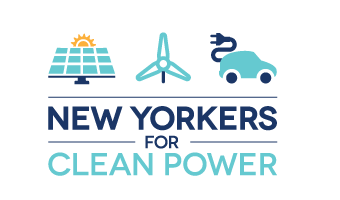Clean Power Success Stories: Paul & Ginny from Ithaca
What to do about climate sustainability? Where to start?
Here’s what we did:
By Paul Moore & Ginny McAuley – Ithaca, NY –July 4, 2021
I moved in with Ginny in 2013. This is where we live: a small home, 24’ x 40’, built with cinder block walls and a stucco exterior. There was no insulation in the walls. The heating system was hot water baseboard using fuel oil with a wood fire supplement. Two thoughts bubbled up in our thinking about upgrading: (1) where to start, and (2) what to do first?
We researched solar power. The rear roof was too shaded by the trees in the backyard? Would we cut down trees that weren’t on our property: of course not. Not such a good idea, so, next!
Step 1 – Insulate
The first obvious one, was to insulate the house. There was no space inside the walls (they are cinder block) to insulate from within. So, a contractor installed 2” of foam insulation on the exterior of the house. It looked like this:
It didn’t make sense to leave insulation open to the environment, so we had the house and garage sided. Our mudroom, the room between the house and garage was also insulated on the east wall of the garage. Now, the mudroom was insulated on all four sides. With one heat vent into that area, it is now usable for four seasons rather than just one.
Step 2 – Replace the windows
Step 2 was replacing all of the windows which were single pane glass with externally mounted storm windows. We did this in three stages. Some were replaced by the contractor who insulated the house. A couple windows were replaced by a local contractor. The remaining were installed by Window World. Now, all of our house windows are double-pane, argon filled, easily adjustable from the inside for the entire house and much more energy efficient.
Step 3 – Replace Oil Heating System with Geothermal Heat Pumps
Step 3 was to upgrade the kerosene, baseboard heat system. We researched geothermal heat and obtained estimates. Our kerosene heat would be gone. The water heater would now also be electric. Most of the heat would come from a two 275 foot shafts dug in our front yard. The heat of the earth provides 56⁰ Fahrenheit glycol to a Water Furnace System 6 Furnace. Ducting was installed throughout the house. Gentle forced warm air would circulate throughout the house being maintained by an automatic thermostat. Expensive? In the short term, yes. Long term, not at all.
Step 4 & 5 – Switch to Solar Electricity, Update the Roof & Talking with NYCP’s Clean Energy Coach
Step 4 was to support local clean electricity by signing up for a community solar project with Delaware River Solar. We pay 10% less than our usual NYSEG bill and help to drive the market for cleaner sources of electricity.
Step 5 was insulating the attic spaces better than they had been and replacing the outer roof’s tiles. Another local contractor did this work. We’re good for 20-plus years.
Presently, we are not 100% net-zero, and we’re pretty darn close. We obtained two NYSERDA energy audits, one prior to all of the above work, and one after it was all completed. Our next steps will be to review our energy usage and change our behavior even more. After an excellent follow-up discussion with Tom Konrad, a Clean Energy Coach with New Yorkers for Clean Power, we started the research to upgrade our Propane fueled gas dryer and stove along with upgrading our older dehumidifier to a more energy efficient unit. These will occur as we can pay for them. I’m pretty sure we’ll be well ahead of any household energy standards.
Step 6 – Recycle & Compost
Step 6 was the change of our life-style, just a bit. We have worked with with Jeremy Betterley at Tompkins County Waste Management, getting specific guidance on some of the gray areas in recycling. So our recycling has improved. We have been using the Tompkins County Waste Composting to reduce our garbage for over 4 years.
Step 7 – Hybrid & Electric Cars
Step 7 was looking at our transportation. On the transportation front, my 2010 Nissan Versa XP died last year. I got about 34 mpg from that car, and was starting to pay-back my fossil fuel usage by donating money to a group who plants trees to offset my fossil fuel usage. As I researched replacement cars, I migrated to a hybrid. Since I haven’t bought a new car since 1969, a new car seemed past my resources. So, I purchased a used 2015 Toyota Camry XLS. It has a 4 cylinder engine with an integrated electric traction motor and batteries. It’s not the best, and it’s better in many ways. My average mileage is 34-36 mpg. When I drive on highways, I average 36 – 39 mpg. Humorfully, when I go down the hill into Ithaca, I get over 80 mpg. When I return, going up the hill, I get 17 mpg! Additionally, when we take longer trips, we use the Camry Hybrid because its mileage is 175% better than Ginny’s 2008 Volvo. At some point, I’ll upgrade to an all-electric vehicle and Ginny will upgrade hers. This will have to wait until electric vehicles’ trip capacities increase well above 400 miles, from their present 150 – 200 miles. In the meantime, we plan our trips, and use some options below.
For additional transportation, both Ginny and I have small motorbikes, one is a 125cc, the other a 150 cc. Both get over 60 mpg. We go for local rides in the country and more enjoy the Finger Lakes region. We also do short runs into town for small amounts of purchases. Yes, it’s weather-dependent and it’s another option. We ride our bicycles on local trails for exercise and enjoyment. We also go for walks, a bit more slowly than before, as I more accommodate my knees.
Step 8 – Lifestyle changes – like diet!
Step 8 is a bit even more challenging. So far, we have accomplished the relatively easy part of energy reduction. Now for some more challenges. As we change our diet, more away from meat consumption, and towards more fresh foods, we eat healthier, use less farmland for our food intake, and become more respectful of life. And, yes, we still love, albeit it less frequently, hot fudge or butterscotch sundaes. We buy from the Reuse Store, the Salvation Army and the Thrift Store, from time to time. We are slower-than-preferred in changing our habits to support what we need, rather than jumping for what we thought we wanted. The Rolling Stones were right: “You don’t always get what you want … and sometimes … you find … you get what you need.” For us, as we increase our awareness and realize the planet’s limits, the choice of need versus want gets more obvious. I’ve restarted swimming at the Y and can almost consistently swim a mile in less than an hour. When I restarted, 3 months ago, I could barely swim ¼ mile in 25 minutes.
You too may have noticed during the last 1 ½ years, in a global pandemic, Zooming with distant friends and family reinvigorates those relationships and is worth the time. Also, one of the benefits of the pandemic for me has been quiet time. With it, I have started to complete many unfinished projects, leaving more space to enjoy Ginny & our more available life, with extra time.
We’re learning to be more peaceful, more balanced, and more focused on quality in our lives. We live where we lived. And, everything is better, for us and the planet. Our journey may not be the same steps or order as yours. It doesn’t matter where you start. For me, my thinking shifted from: aiming towards perfection, to making progress, to being more patient with myself. My goals shifted by questioning what’s important in my life. What am I aiming toward? Will I expand any global problems, along the way, or will I solve some in my personal journey?
Hopefully, we are more peaceful and happy. There is still shoveling snow in the driveway, mowing the grass and dealing with an aging household. We still enjoy going out, just not as often. We are the same, yet totally different, if you know what I mean. Good luck in your journey!






